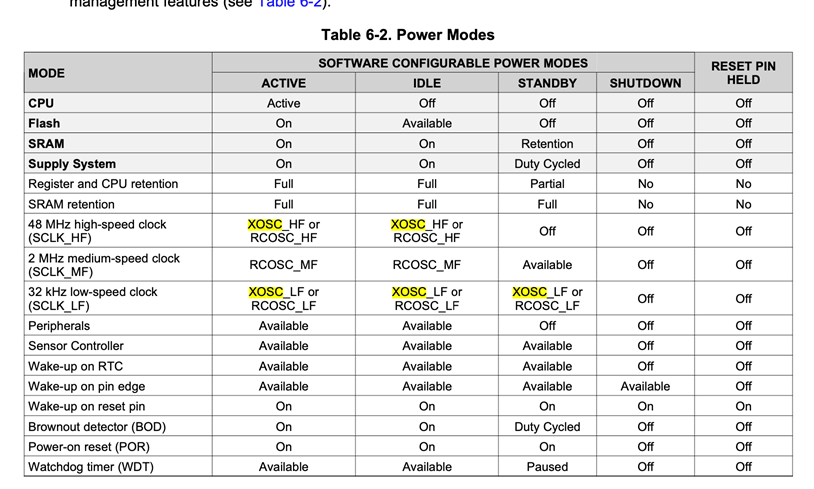Hi,
I was trying to make the CC1352P enter standby mode. I suspended all tasks and then i measured ~0.5mA which is what should get when the processor is in Idle mode.
- The clock in my system is: CCFGREAD_SCLK_LF_OPTION_XOSC_LF
- So in function Power_init() the driver choose to disallow standby mode and sets it: Power_setConstraint(PowerCC26XX_DISALLOW_STANDBY);
- When the driver should change its power mode in function PowerCC26XX_standbyPolicy() it cant enter standby and therefore doesn't run the line : Power_sleep(PowerCC26XX_STANDBY);
This is not the whole story. In TI's datasheet SWRS192C there is the following table, which shows that in standby-mode the 48 MHz clock is off, meaning M4 is off, and that is what i wanted. It doesn't mention and limitation on entering this mode.
So what am I missing and I need to do in order make the processor enter standby-mode?
thank you,
Adi



